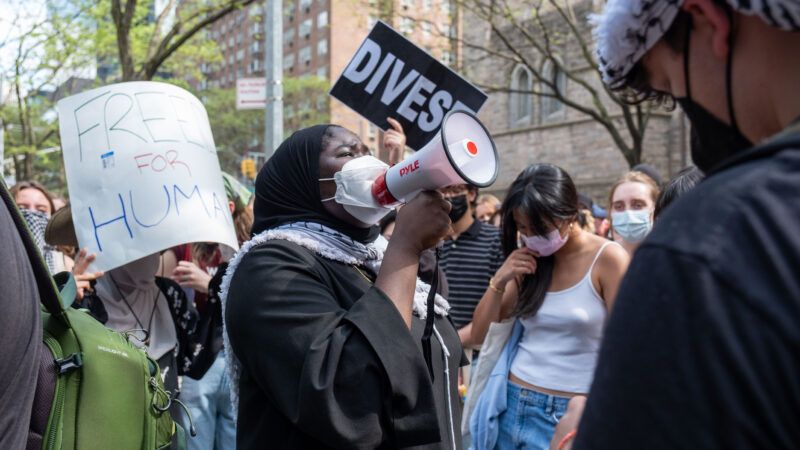1 in 3 College Students Say Violence in a Campus Protest Can Be Acceptable, Survey Finds
The survey of over 50,000 students also found that 37 percent of students said it was "sometimes" or "always" acceptable to shout down a speaker, up from 31 percent last year.

Thirty-two percent of college students believe it can be acceptable in at least some circumstances to use violence to stop a campus speech, according to a newly released survey of over 50,000 college students from 258 universities. The survey, conducted by the Foundation for Individual Rights and Expression (FIRE), a First Amendment group, is the fifth released by the organization.
FIRE's survey polled students on a range of questions about their attitudes toward free expression and the general climate at their universities. FIRE also ranked schools based on student reports, as well as their formal speech policies and their administration's history of speech-stifling actions.
The public University of Virginia (UVA) took the top spot this year, while Harvard—for the second year in a row—came in last place. However, FIRE's ranking process is complex. UVA, for example, came in first place primarily due to consistent administrative support for free speech. But when looking at subcategories that cover student opinion, UVA ranked 200th for support for disruptive conduct and 112th for self-censorship.
"The student body overturns a certain amount every year. Presumably every four or five years it's an entirely new student body," says Sean Stevens, FIRE's chief research adviser. "But the administrative culture, kind of the culture established there can stick for longer."
The survey also found sharp increases in students' support for disruptive or violent protest activities. Thirty-seven percent of students said it was "sometimes" or "always" acceptable to shout down a campus speaker, up from 31 percent last year. In all, less than 1 in 3 students said that it would "never" be acceptable to shout down a speaker.
The percentage of students agreeing that it was never acceptable to use violence to stop a speaker also declined five percentage points—declining to 68 percent from 73 percent last year. While this means nearly 1 in 3 students expressed willingness to support violent protest, it's worth noting that this doesn't necessarily mean that those students would ever participate in violence themselves. Further, FIRE's survey didn't define violence or give an example of a violent action. Regardless, the upward trend in support for violence, in at least some circumstances, is troubling.
It's likely that the contentious, frequently disruptive anti-Israel protests that dominated many campuses last year played a role in the shift. Fifty-five percent of surveyed students agreed that it is "difficult to have an open and honest conversation" about the Israeli/Palestinian conflict, more than any other topic.
Over the past five years, "the trends are going in the bad direction," Stevens says. "More people are saying it's acceptable to shout down the speaker, to block entry, to use violence."
For the first time, FIRE's survey asked students about their mental health. Over 60 percent of students reported that they felt anxious at least half the time—including nearly 7 in 10 female students. Almost 40 percent of students reported feeling lonely or depressed at least half the time.
Over 1 in 4 students reported having three or fewer close friends—including 30 percent of Harvard students, a staggering 17 percent of whom said they had zero close friends.
Stevens says that those results were "more upsetting than I would have expected," adding that while it's unclear whether students "would get a diagnosis of depression or they would get a diagnosis of generalized anxiety, if they are saying they feel that way, I think that matters."
But FIRE's report didn't turn up all bad news. Student worries about self-censorship seem to be steadily declining. Forty-five percent of students reported that they felt they could not express their opinion on a subject because of how others would respond at least "occasionally" or more. Compare that to last year's 50 percent and the 2022–23 school year's 56 percent.


Show Comments (74)